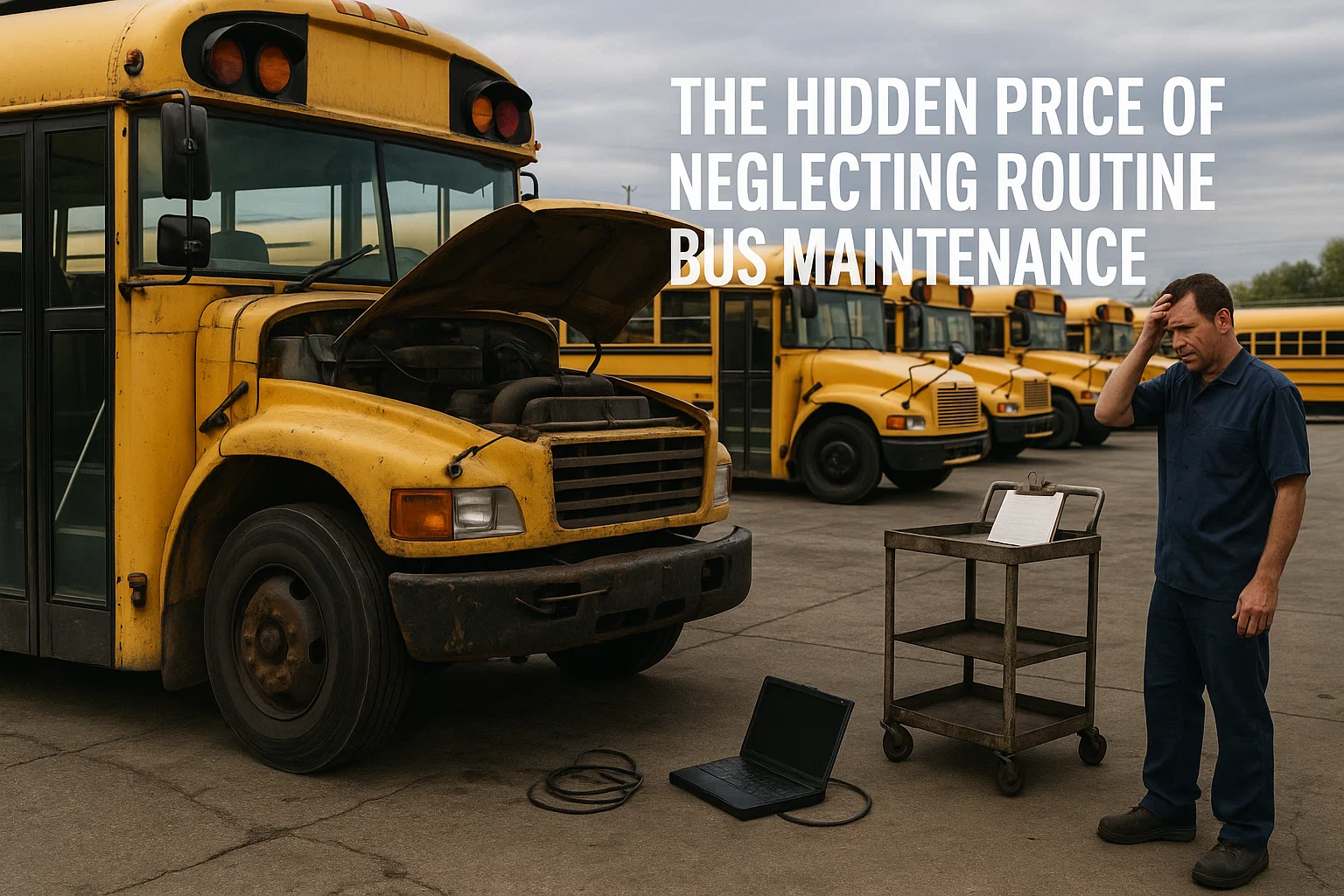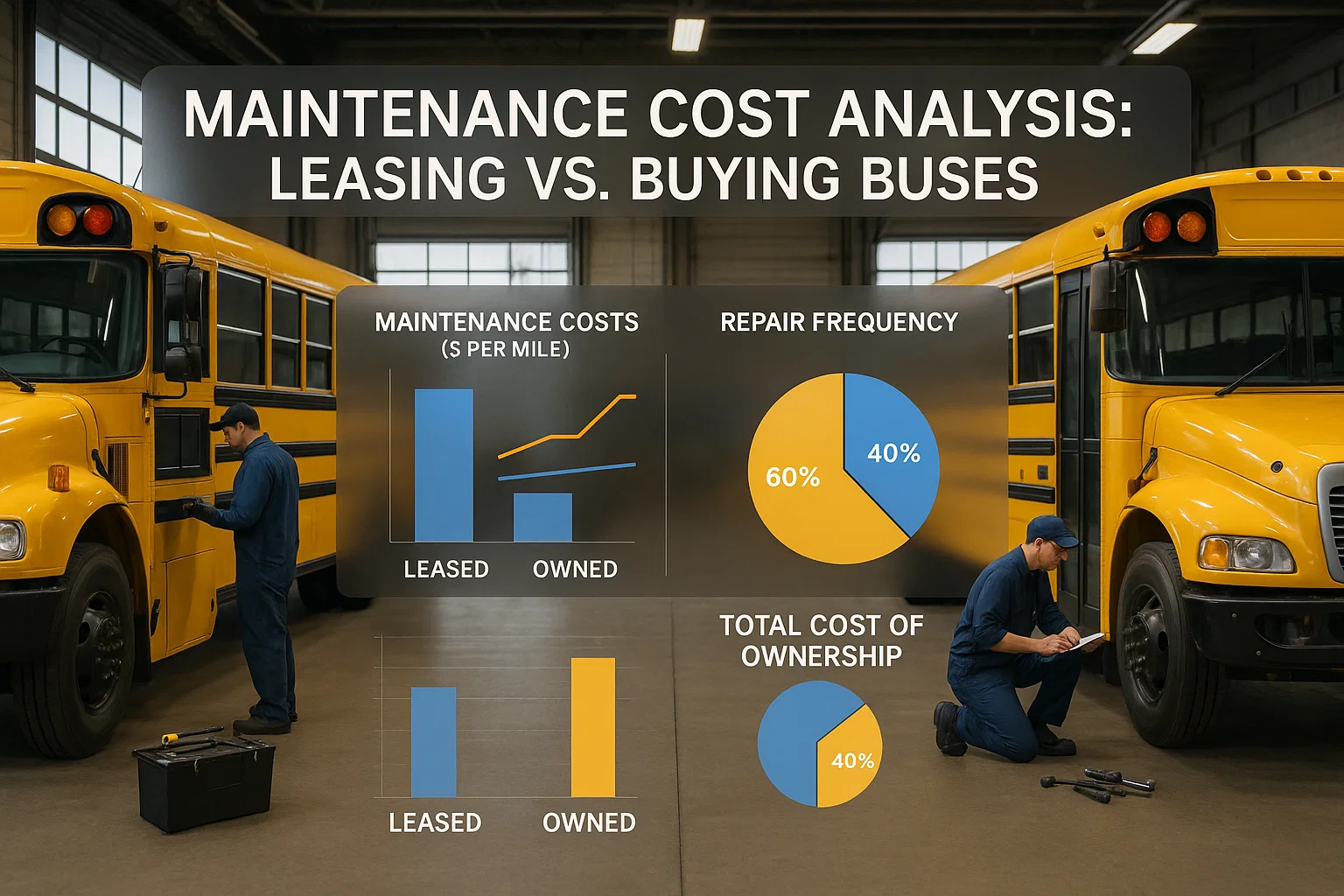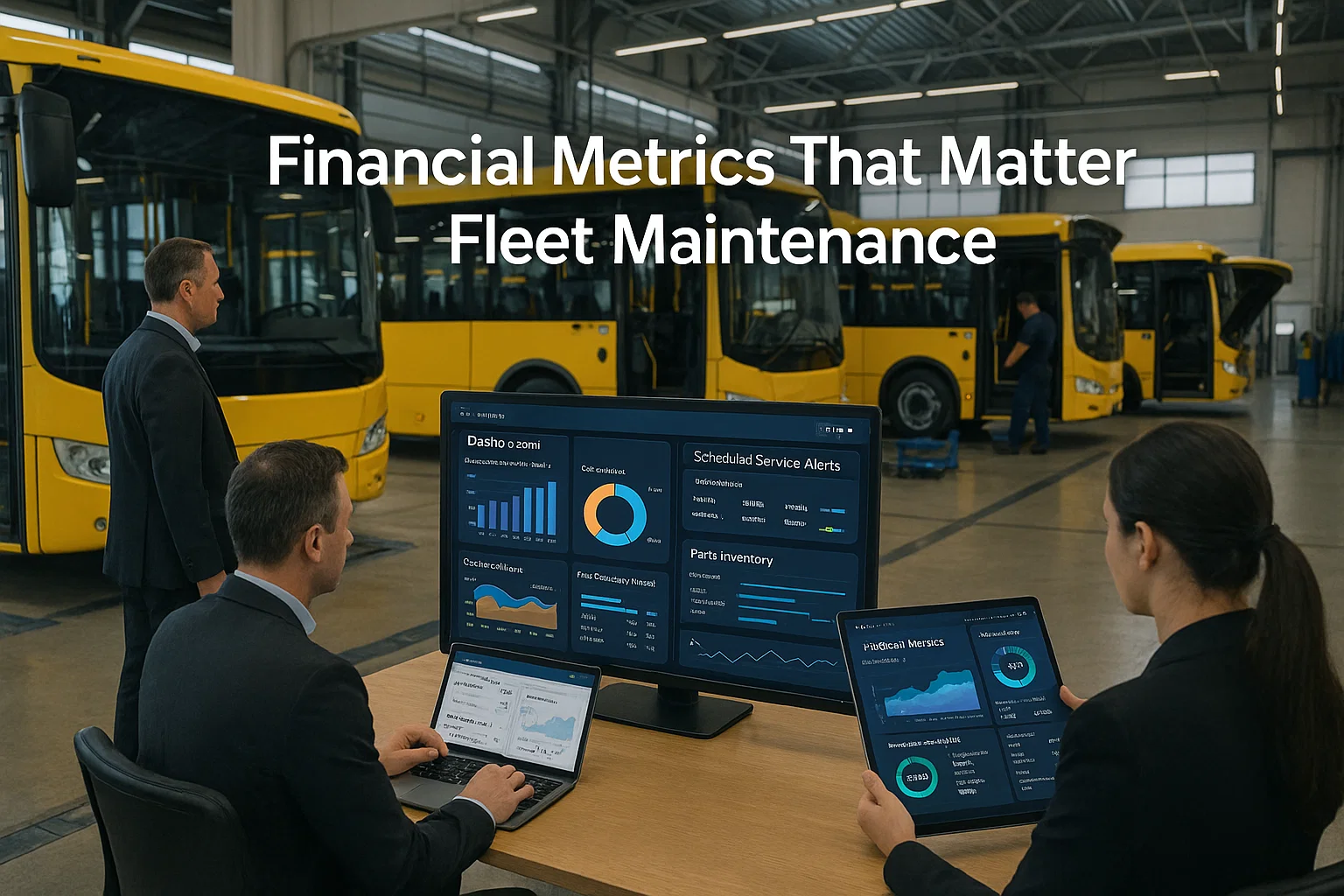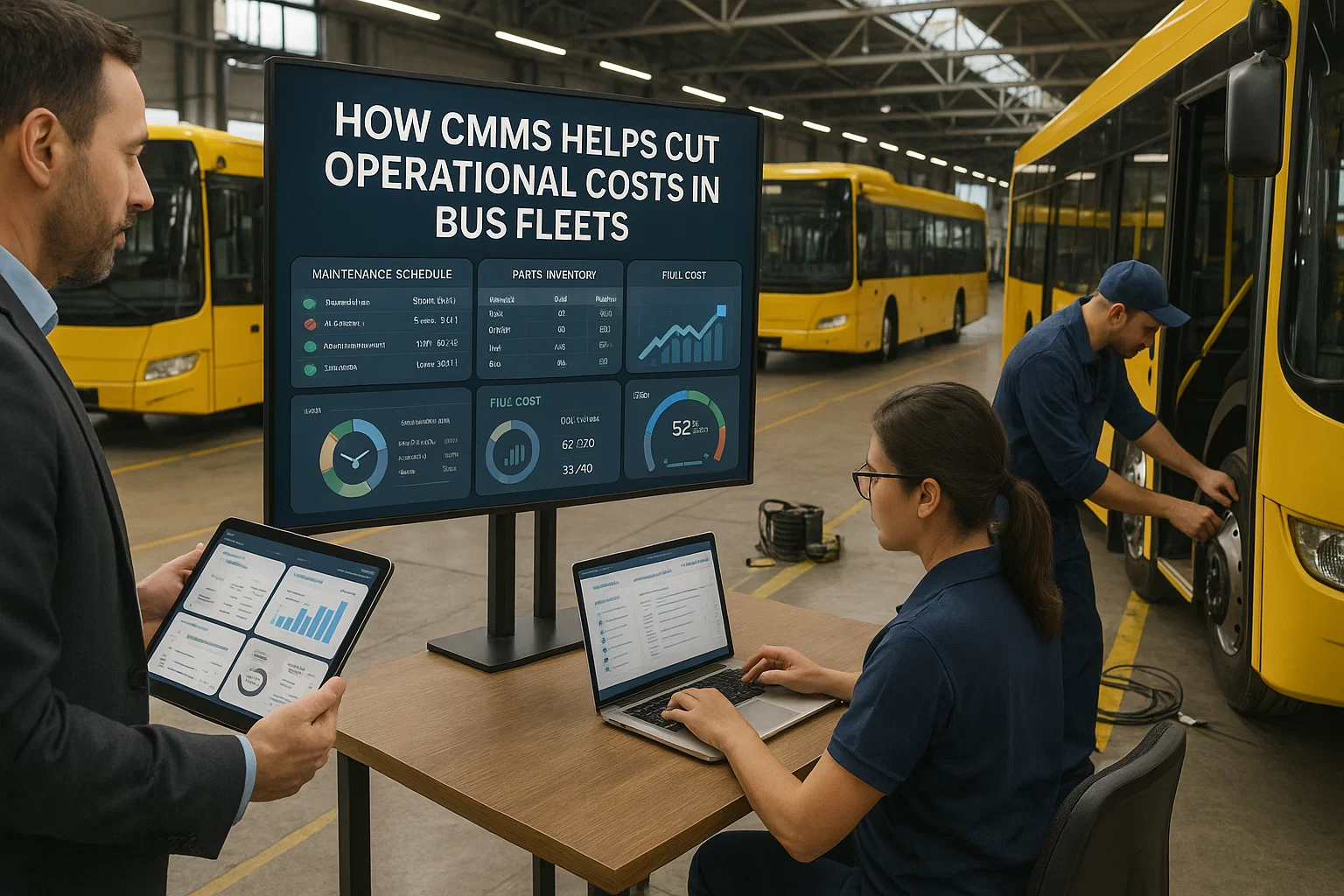Every fleet manager understands that maintenance costs money, but the true price of neglecting routine bus maintenance extends far beyond visible repair bills. Advanced fleet management systems reveal that deferred maintenance creates a cascade of hidden costs that can devastate fleet budgets, compromise safety, and destroy operational efficiency. These invisible expenses often exceed the cost of proper maintenance by 300-500%, yet remain untracked in traditional accounting systems.
The temptation to skip or delay routine maintenance appears attractive during budget crunches, promising immediate cost savings that seem to improve short-term financial performance. However, comprehensive maintenance tracking platforms demonstrate that every dollar saved through deferred maintenance ultimately costs organizations $4-7 in emergency repairs, downtime, and secondary damage. This maintenance debt compounds exponentially, creating a vicious cycle where growing repair backlogs consume ever-larger portions of operating budgets.
Organizations implementing preventive maintenance solutions report discovering hidden costs totaling 40-60% of their visible maintenance expenses. These revelations include premature vehicle replacement costs, lost revenue from breakdowns, liability exposure from preventable accidents, and damaged customer relationships from service failures. Understanding and quantifying these hidden costs transforms maintenance from a grudging expense into a strategic investment that protects profitability and ensures sustainable operations.
Stop Hidden Costs From Draining Your Budget
Discover how proper maintenance tracking saves 40-60% in hidden expenses.
Getting StartedBook a Demo
The Domino Effect of Deferred Maintenance
Cascading System Failures
- Engine Damage Progression: Skipped oil changes lead to bearing wear, then complete engine failure requiring $15,000-30,000 replacement
- Brake System Deterioration: Delayed pad replacement damages rotors, calipers, and hydraulics, multiplying costs by 10x
- Cooling System Neglect: Ignored coolant flushes cause corrosion, leading to radiator, water pump, and head gasket failures
- Transmission Destruction: Postponed fluid changes result in $5,000-12,000 rebuilds versus $200 service costs
- Electrical System Cascade: One faulty component triggers multiple system failures through voltage irregularities
When routine maintenance gets deferred, minor issues evolve into major failures that trigger cascading damage throughout vehicle systems. Maintenance analytics platforms track how a simple $50 filter replacement, when ignored, leads to thousands in engine repairs. This domino effect means that saving hundreds through deferred maintenance often costs tens of thousands in consequential damage.
Accelerated Depreciation Impact
Neglected maintenance dramatically accelerates vehicle depreciation, destroying asset value at rates 2-3 times faster than properly maintained fleets. Fleet valuation tools demonstrate that poorly maintained buses lose 15-20% more value annually, representing millions in destroyed capital across large fleets. This accelerated depreciation forces premature replacement, transforming what should be 12-15 year assets into 7-8 year liabilities.
Quantifying Hidden Downtime Costs
Vehicle breakdowns create ripple effects that extend far beyond repair expenses, generating hidden costs that dwarf the visible maintenance bills. Fleet analytics software reveals that unplanned downtime costs average $1,000-2,500 per day per vehicle when accounting for all direct and indirect impacts.
Lost Revenue Calculations
Every hour a revenue-generating vehicle sits idle represents lost income that never appears on maintenance reports. Charter buses lose $500-1,500 daily in booking revenue, while transit agencies face service penalties and reduced ridership from unreliable operations. Downtime tracking systems help organizations quantify these losses, often revealing annual revenue impacts exceeding total maintenance budgets.
Beyond direct revenue loss, breakdowns trigger customer defection that destroys long-term value. Studies show that 23% of customers switch providers after experiencing service failures from vehicle breakdowns. Customer retention analytics demonstrate that each lost customer represents $10,000-50,000 in lifetime value, making breakdown prevention critical for business sustainability.
Emergency Response Expenses
Roadside breakdowns generate substantial emergency response costs that routine maintenance would prevent. Towing charges average $500-1,500 per incident, while mobile repair services command premium rates 2-3 times higher than shop repairs. Emergency tracking platforms document how organizations spending $100,000 annually on emergency responses could eliminate 80% of these costs through proper preventive maintenance.
Labor and Productivity Hidden Costs
Neglected maintenance creates massive hidden labor costs through inefficiency, overtime, and reduced productivity. Workforce analytics tools reveal that reactive maintenance requires 3-5 times more labor hours than preventive maintenance for the same repairs, dramatically inflating personnel costs.
Overtime Premium Spiral
Emergency Repair Overtime
Breakdowns trigger overtime rates adding 50-100% to labor costs for urgent repairs
Weekend Call-Outs
After-hours emergencies incur double-time rates plus callback minimums
Technician Burnout Costs
Constant emergencies drive turnover, creating $15,000-25,000 replacement costs per technician
The reactive maintenance cycle forces technicians into constant crisis mode, destroying morale and driving expensive turnover. Maintenance scheduling platforms demonstrate that organizations with proper preventive programs reduce overtime by 60-70% while improving technician retention by 40%. This translates to hundreds of thousands in annual savings from reduced overtime and recruitment costs.
Administrative Burden Multiplication
Emergency repairs generate 5-10 times more administrative work than scheduled maintenance, consuming valuable management time. Workflow automation systems show that each breakdown requires hours of coordination, documentation, and communication that planned maintenance avoids. This hidden administrative cost often equals 20-30% of the direct repair expense.
Parts and Inventory Hidden Expenses
Poor maintenance practices create enormous hidden costs in parts procurement and inventory management. Inventory optimization platforms reveal that reactive maintenance increases parts costs by 35-50% through emergency ordering, expedited shipping, and premium pricing.
Emergency Procurement Premiums
- Expedited Shipping Charges: Overnight delivery adds $100-500 per order for emergency parts
- Premium Vendor Pricing: Urgent orders command 20-40% higher prices due to immediate need
- Minimum Order Penalties: Emergency purchases often fail to meet bulk discount thresholds
- Wrong Part Losses: Rush orders increase error rates, creating 10-15% waste from incorrect parts
- Inventory Obsolescence: Panic buying creates excess stock that becomes obsolete
Organizations practicing proper preventive maintenance through parts management systems reduce procurement costs by 30-40% through planned purchasing, bulk discounts, and eliminated expediting charges. This strategic approach to parts management generates savings that often exceed the cost of the preventive maintenance program itself.
Calculate Your True Maintenance Costs
Uncover the hidden expenses destroying your fleet profitability today.
Getting StartedBook a Demo
Safety and Liability Hidden Risks
Deferred maintenance creates enormous liability exposure that organizations rarely quantify until facing lawsuits. Risk management platforms demonstrate that maintenance-related accidents generate average settlements of $500,000-2,000,000, while proper maintenance documentation provides crucial legal protection.
Accident Liability Escalation
Negligence Claims
Documented maintenance neglect transforms accidents into negligence lawsuits with punitive damages
Insurance Premium Increases
Poor maintenance records trigger 30-50% premium increases after claims
Regulatory Penalties
Maintenance violations result in $10,000-100,000 fines plus operational restrictions
Legal experts confirm that maintenance records determine liability outcomes, with neglected maintenance shifting fault entirely to fleet operators. Compliance tracking systems provide the documentation necessary to demonstrate due diligence, potentially saving millions in lawsuit settlements and preventing criminal negligence charges.
Insurance Coverage Gaps
Insurance policies often exclude coverage for accidents caused by documented maintenance neglect, leaving organizations fully exposed to claims. Risk assessment tools help identify coverage gaps created by poor maintenance practices, revealing potential exposures that could bankrupt organizations after major incidents.
Customer Relationship Destruction
Vehicle breakdowns destroy customer relationships in ways that financial statements never capture, creating long-term value destruction that exceeds immediate costs. Customer analytics platforms track how maintenance failures trigger customer defection, negative reviews, and lost referrals that impact revenue for years.
Service Failure Cascades
- Immediate Customer Loss: 23% of customers leave after experiencing breakdown-related service failures
- Negative Review Impact: Each breakdown generates 3-5 negative reviews affecting future sales
- Referral Revenue Loss: Dissatisfied customers eliminate $50,000-200,000 in referral business
- Contract Cancellations: Commercial clients terminate contracts worth millions after reliability issues
- Brand Reputation Damage: Social media amplifies failures, destroying reputation across markets
The lifetime value of lost customers often exceeds breakdown costs by 10-20 times, yet these losses remain hidden without proper tracking. Customer retention systems help organizations understand the true cost of maintenance-related service failures and justify preventive maintenance investments.
Environmental and Regulatory Hidden Penalties
Neglected maintenance creates environmental compliance issues that generate substantial hidden costs through fines, remediation, and operational restrictions. Environmental compliance platforms track how poor maintenance leads to emissions violations, fluid leaks, and disposal violations that trigger regulatory action.
Emissions Violation Consequences
EPA Fines and Penalties
Emissions violations generate $10,000-50,000 daily fines until corrected
Operating Restrictions
Non-compliant vehicles face operational bans in regulated zones
Remediation Costs
Environmental cleanup from leaks costs $50,000-500,000 per incident
Environmental violations create cascading costs through mandatory equipment upgrades, increased inspection frequency, and public relations damage. Compliance management tools prevent these violations through automated maintenance scheduling that ensures emissions systems receive proper service before problems develop.
Operational Efficiency Degradation
Poor maintenance gradually destroys operational efficiency in ways that escape traditional cost tracking but significantly impact profitability. Efficiency monitoring systems reveal how neglected maintenance reduces fuel economy, increases idle time, and disrupts scheduling across entire operations.
Fuel Efficiency Destruction
Neglected maintenance reduces fuel efficiency by 15-30%, adding thousands annually in fuel costs per vehicle. Simple maintenance items like air filters, tire pressure, and engine tuning dramatically impact consumption, yet these savings remain invisible without proper tracking. Fuel analytics platforms demonstrate that proper maintenance saves $3,000-8,000 annually per vehicle in fuel costs alone.
Schedule Disruption Ripples
- Route Coverage Gaps: Breakdowns force route cancellations affecting hundreds of passengers
- Driver Overtime Triggers: Delays cascade through schedules creating overtime obligations
- Substitute Vehicle Inefficiency: Backup vehicles consume 20-30% more fuel and maintenance
- Dispatch Complexity Increase: Constant shuffling adds administrative burden and errors
- Service Quality Decline: Unreliable schedules destroy customer confidence and ridership
Eliminate Hidden Maintenance Costs Forever
Transform reactive repairs into proactive savings with smart maintenance tracking.
Getting StartedBook a Demo
Technology and Data Loss Costs
Modern buses contain sophisticated technology systems that suffer expensive damage from maintenance neglect. Technology management platforms track how poor maintenance destroys electronic control units, telematics systems, and passenger amenities that cost thousands to replace.
Electronic System Failures
ECU Damage
Voltage irregularities from poor maintenance destroy $2,000-5,000 control units
Sensor Degradation
Contamination and vibration destroy sensors creating diagnostic blindness
Communication System Loss
Failed maintenance corrupts telematics creating $10,000+ replacement costs
Technology failures compound maintenance challenges by eliminating diagnostic capabilities and predictive analytics. System monitoring tools protect these investments through maintenance schedules that prevent the conditions causing electronic failures.
Competitive Disadvantage Accumulation
Organizations neglecting maintenance fall progressively behind competitors who invest in proper fleet care, creating competitive disadvantages that compound over time. Competitive analysis platforms reveal how maintenance practices directly impact market position through service quality, pricing power, and operational flexibility.
Market Position Erosion
- Service Reliability Gap: Competitors with 99% reliability capture premium contracts
- Price Competition Weakness: High maintenance costs prevent competitive pricing
- Fleet Modernization Delays: Repair costs consume capital needed for fleet updates
- Customer Preference Shift: Markets increasingly demand reliable, well-maintained fleets
- Regulatory Advantage Loss: Competitors with better maintenance win regulated route rights
The competitive impact of poor maintenance extends beyond immediate costs to strategic positioning. Market analysis tools demonstrate that organizations with superior maintenance practices command 15-20% price premiums while maintaining higher margins through operational efficiency.
Knowledge and Expertise Drain
Constant emergency repairs prevent organizations from developing maintenance expertise and institutional knowledge that improves efficiency over time. Knowledge management systems show how reactive maintenance creates a vicious cycle where technicians never develop specialization, problems repeat endlessly, and best practices never emerge.
Institutional Learning Prevention
Pattern Recognition Loss
Emergency focus prevents identification of recurring issues and root causes
Skill Development Stagnation
Crisis mode prevents technician training and specialization development
Process Improvement Paralysis
Constant firefighting eliminates time for systematic improvement initiatives
Organizations trapped in reactive maintenance never develop the capabilities that reduce costs and improve reliability. Training management platforms enable systematic skill development and knowledge capture that transforms maintenance from expensive crisis management into efficient, predictable operations.
Financial Reporting Blindness
Traditional accounting systems fail to capture the true cost of deferred maintenance, creating financial reporting blindness that enables continued neglect. Financial analytics platforms reveal hidden costs that accounting never sees, providing the visibility necessary for informed decision-making.
Invisible Cost Categories
- Opportunity Costs: Lost business from reduced fleet availability never appears in reports
- Productivity Losses: Inefficiency from poor maintenance hides in operational expenses
- Customer Value Destruction: Lifetime value losses remain unmeasured and unmanaged
- Risk Accumulation: Growing liability exposure stays hidden until catastrophic events
- Competitive Erosion: Market position decline occurs gradually without clear attribution
Comprehensive cost tracking through maintenance analytics software illuminates these hidden expenses, often revealing that true maintenance costs exceed visible expenses by 200-300%. This visibility transforms maintenance from a cost center into an investment that generates measurable returns.
Frequently Asked Questions
How does Bus CMMS reveal hidden maintenance costs that traditional tracking misses?
Advanced maintenance tracking platforms uncover hidden costs through comprehensive data collection and correlation that traditional methods never capture. The system tracks not just direct repair expenses but all consequential impacts including downtime revenue loss, customer defection rates, overtime premiums, emergency procurement charges, and accelerated depreciation from neglect. Sophisticated algorithms correlate maintenance deferrals with downstream failures, quantifying how a skipped $200 service leads to $5,000 in cascading damage. Real-time monitoring systems capture productivity losses from inefficient operations, administrative burden from emergency coordination, and competitive disadvantages from poor reliability. The platform tracks fuel efficiency degradation, identifying how neglected maintenance increases consumption by 15-30% annually. Integration with financial systems reveals how maintenance impacts insurance premiums, warranty recovery rates, and asset valuations. Predictive analytics tools forecast future costs from current maintenance gaps, showing organizations the true price of continued neglect. This comprehensive visibility typically reveals hidden costs totaling 40-60% above visible maintenance expenses, providing the business case for proper preventive maintenance investment. By illuminating these hidden expenses, the platform transforms maintenance from a grudging expense into a strategic investment with clear, measurable returns.
What ROI can fleets expect from eliminating hidden maintenance costs with Bus CMMS?
Fleets implementing comprehensive maintenance management systems to eliminate hidden costs typically achieve extraordinary returns, with total savings often exceeding 300-400% of the platform investment within the first year. Direct cost elimination includes 60-70% reduction in emergency repairs through preventive maintenance, 40-50% decrease in parts expenses through planned procurement, 35-40% reduction in overtime through scheduled maintenance, and 25-30% savings in fuel through efficiency optimization. Automated maintenance scheduling prevents the cascading failures that multiply repair costs by 5-10 times, while warranty tracking recovers 15-25% of parts expenses previously lost. Beyond direct savings, organizations capture enormous indirect value through 50% reduction in vehicle downtime that preserves revenue generation, eliminated liability exposure from proper maintenance documentation, 30-40% improvement in customer retention from reliable service, and 2-3 year extension in vehicle life that defers capital expenditures. Risk mitigation features prevent catastrophic losses from accidents, environmental violations, and insurance gaps that could cost millions. The platform typically pays for itself within 3-4 months through cost avoidance alone, with ongoing returns that compound annually as maintenance practices improve and hidden costs disappear permanently from operations.
Uncover and Eliminate Your Hidden Maintenance Costs
Start saving 40-60% on hidden expenses with intelligent maintenance management.
Getting StartedBook a Demo
Conclusion
The hidden price of neglecting routine bus maintenance extends far beyond visible repair bills, creating a web of costs that can consume 300-500% more than proper preventive maintenance would require. Through comprehensive tracking and analysis, modern maintenance management platforms illuminate these hidden expenses, revealing the true financial impact of maintenance decisions on organizational success.
From cascading system failures and accelerated depreciation to customer loss and liability exposure, the consequences of deferred maintenance touch every aspect of fleet operations. Organizations that understand and quantify these hidden costs through data-driven maintenance systems transform their approach from reactive crisis management to proactive asset optimization.
The path forward requires acknowledging that maintenance is not an expense to minimize but an investment that generates measurable returns through cost avoidance, risk mitigation, and operational excellence. By implementing comprehensive maintenance tracking that captures all costs—visible and hidden—fleet operators can break the cycle of deferred maintenance and build sustainable, profitable operations that thrive in competitive markets.
Stop Hidden Costs From Destroying Your Fleet Profitability
Discover how intelligent maintenance management eliminates hidden expenses and transforms your fleet operations.







